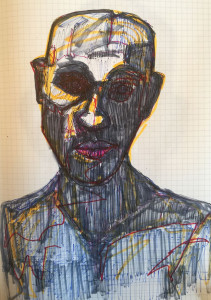Lying, it turns out, is something that most of us are very adept at. We lie with ease, in ways big and small, to strangers, co-workers, friends, and loved ones. Our capacity for dishonesty is as fundamental to us as our need to trust others, which ironically makes us terrible at detecting lies. Being deceitful is woven into our very fabric, so much so that it would be truthful to say that to lie is human.
The ubiquity of lying was first documented systematically by Bella DePaulo, a social psychologist at the University of California, Santa Barbara. The researchers found that the subjects lied on average one or two times a day.
“Lying is so easy compared to other ways of gaining power,” notes Sissela Bok, an ethicist at Harvard University who’s one of the most prominent thinkers on the subject. “It’s much easier to lie in order to get somebody’s money or wealth than to hit them over the head or rob a bank.”
There appears to be no agreement among psychiatrists about the relationship between mental health and lying, even though people with certain psychiatric disorders seem to exhibit specific lying behaviors. Sociopathic individuals—those diagnosed with antisocial personality disorder—tend to tell manipulative lies, while narcissists may tell falsehoods to boost their image.
Researchers have shown that we are especially prone to accepting lies that affirm our worldview. Debunking them does not demolish their power, because people assess the evidence presented to them through a framework of preexisting beliefs and prejudices, says George Lakoff, a cognitive linguist at the University of California, Berkeley. “If a fact comes in that doesn’t fit into your frame, you’ll either not notice it, or ignore it, or ridicule it, or be puzzled by it—or attack it if it’s threatening.”
Technology has opened up a new frontier for deceit, adding a 21st-century twist to the age-old conflict between our lying and trusting selves.1
1This blog contains excerpts from Bhattacharjee, Yudhijit, Why We Lie: The Science Behind Our Deceptive Ways, June 2017 National Geographic retrieved from www.nationalgeographic.com



